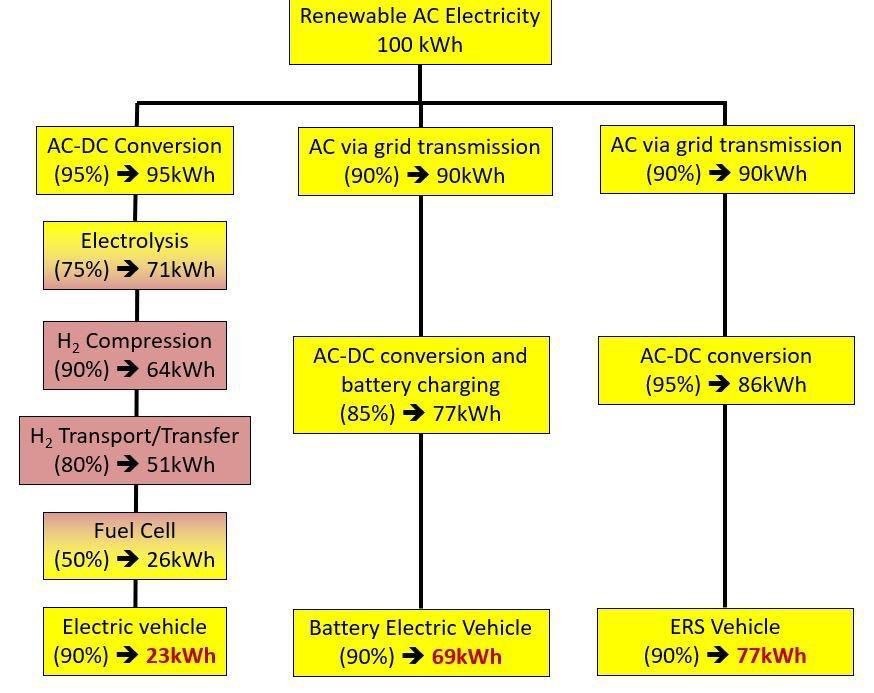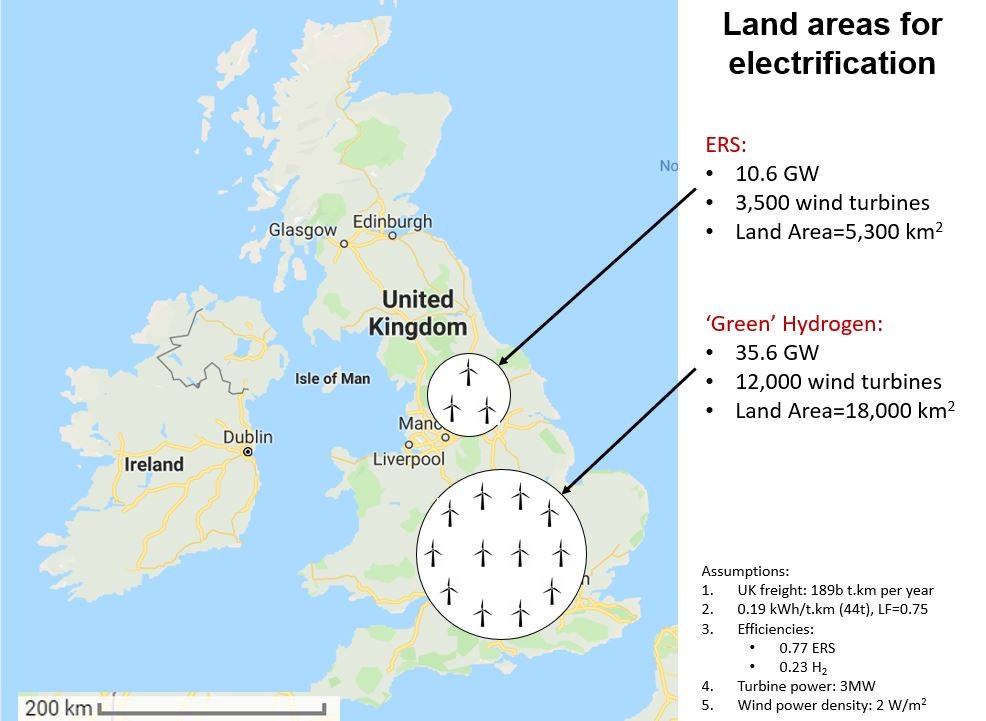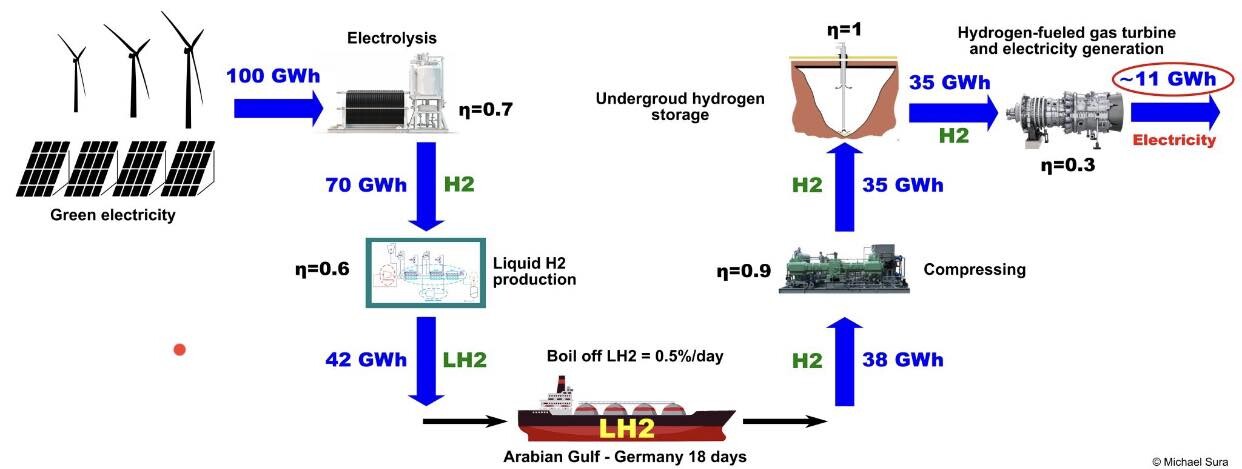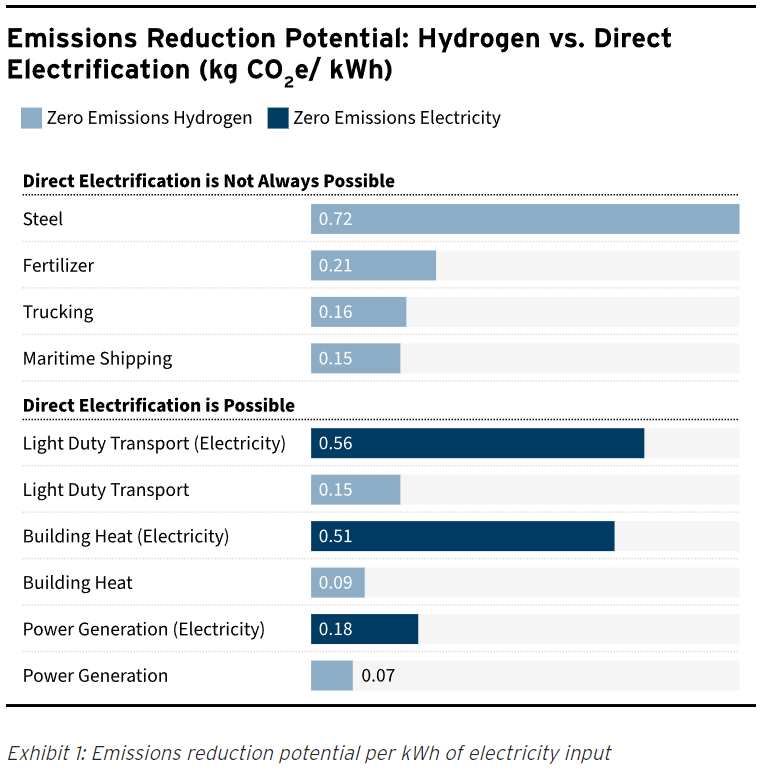

Hydrogen’s potential for decarbonization lies in its versatility. It can be produced from water via electrolysis powered by renewable energy, or from natural gas with carbon capture and storage, resulting in a low-carbon fuel source. However, realizing this potential would require significant technological and economic developments. Currently, hydrogen production is mostly from fossil fuels without carbon capture, which is carbon-intensive. The processes of electrolysis are improving but still need to become more efficient and less costly. Similarly, issues of hydrogen storage, transportation, and infrastructure development are substantial hurdles to its widespread use.
An electron economy could contribute to decarbonization by drastically reducing the use of fossil fuels for electricity generation. Renewable technologies like solar and wind are becoming more efficient and cheaper, allowing for an increased share of electricity generation. The wider use of electric vehicles and heat pumps would also reduce carbon emissions by replacing combustion engines and boilers. Nevertheless, the intermittency of renewable power sources presents a challenge that would require developments in energy storage technology and power grid management. Additionally, upgrading the grid infrastructure to accommodate a larger share of renewable sources is a significant undertaking.
The Hydrogen Economy – What is it? How Does it Work
The hydrogen economy is a proposed system for delivering energy through the use of hydrogen. This concept revolves around the idea of using hydrogen, the most abundant element in the universe, as a primary energy source. In an ideal hydrogen economy, the energy required for all forms of transportation, residential and commercial power, and industry will be provided by hydrogen. The hydrogen economy works by using hydrogen as an energy carrier, not an energy source. Hydrogen can store energy in a form that can be used directly as fuel, or it can be converted into electricity through a fuel cell. Hydrogen is produced either from fossil fuels through steam reforming, or from water through electrolysis. In a sustainable hydrogen economy, renewable energy sources (such as wind, solar, and hydro) would power the electrolysis, creating a completely clean energy cycle. the benefit of the hydrogen economy might be summarized
BUT !! the challenges and drawbacks might be summarized also
The Electron Economy – What is it? How Does it Work
The Electron Economy is a futuristic vision of how we produce, distribute, and consume energy. The electron economy concept revolves around direct utilization of electricity produced from sustainable and renewable energy sources. The idea is to replace the existing carbon-based economy with one centered on electricity, thereby reducing carbon emissions and mitigating the effects of climate change. The electron economy works by directly using electricity for most energy needs. Renewable energy technologies like wind, solar, and hydro power are used to generate electricity. This electricity can then be used directly in residential and commercial buildings, and also to power electric vehicles. The system also relies on a smart grid to manage the distribution of electricity and balance the supply and demand. the benefit of the electron economy might be summarized
The challenges and drawbacks might be summarized also
Hydrogen Economy vs. Electron Economy: A Comparative Analysis

Hydrogen, as an energy medium, necessitates production through renewable electricity by water electrolysis. The stored energy in hydrogen is then converted back to electricity using fuel cells when it recombines with oxygen, forming water once again. It’s important to note that electrolysis demands significant amounts of electrical energy and water, making the process resource-intensive.
Hydrogen is not an inherent energy source; instead, it serves as an energy carrier, similar to traditional fuels. However, its delivery methods, whether by truck or pipeline, incur energy costs that significantly exceed those of common energy carriers such as natural gas. The energy losses in these processes are substantial and cannot be mitigated even by the most efficient fuel cells.

For safety considerations of storage of hydrogen, a portion of the stored hydrogen has to be permitted to evaporate. Moreover, the infrastructure required to support a hydrogen economy is disproportionately larger than for other energy types: approximately four renewable power plants are required to generate the equivalent energy output of one power plant when hydrogen and fuel cells are involved. Three of these plants primarily serve to compensate for the so-called parasitic losses of the hydrogen economy, leaving only one plant’s output as useful, exploitable energy.

This inefficiency couldn’t be significantly improved through technological advancements. This is because the efficiency limitations are inherently tied to the physical properties of hydrogen itself, such as its low density and extremely low boiling point. These attributes increase the energy expenditure and investment costs associated with hydrogen compression or liquefaction and storage.
In an ‘Electron economy’, the majority of energy would be distributed through electricity, offering maximum efficiency. This would leverage existing infrastructures, providing the shortest route from energy generation to consumption. It would be significantly more efficient to use electricity directly to power devices. The efficiency of an electron economy is undiminished by wasteful energy transformations from physical to chemical forms and vice versa. Electricity can power a variety of applications, such as cars, temperature control in buildings, heating, lighting, communication, and more, in a more efficient and direct manner.
Electron Economy – Hard-to-Electrify Sectors
Certain sectors of the economy are considered “hard-to-electrify” because they present unique challenges that make it difficult to transition from fossil fuels to electric power. there are some example concluded below

The common challenges across hard-to-electrify sectors are the need for high energy density fuels and high temperatures, the need for rapid refueling or recharging, and the difficulties in providing electricity in remote or off-grid locations.
Key Takeaways












